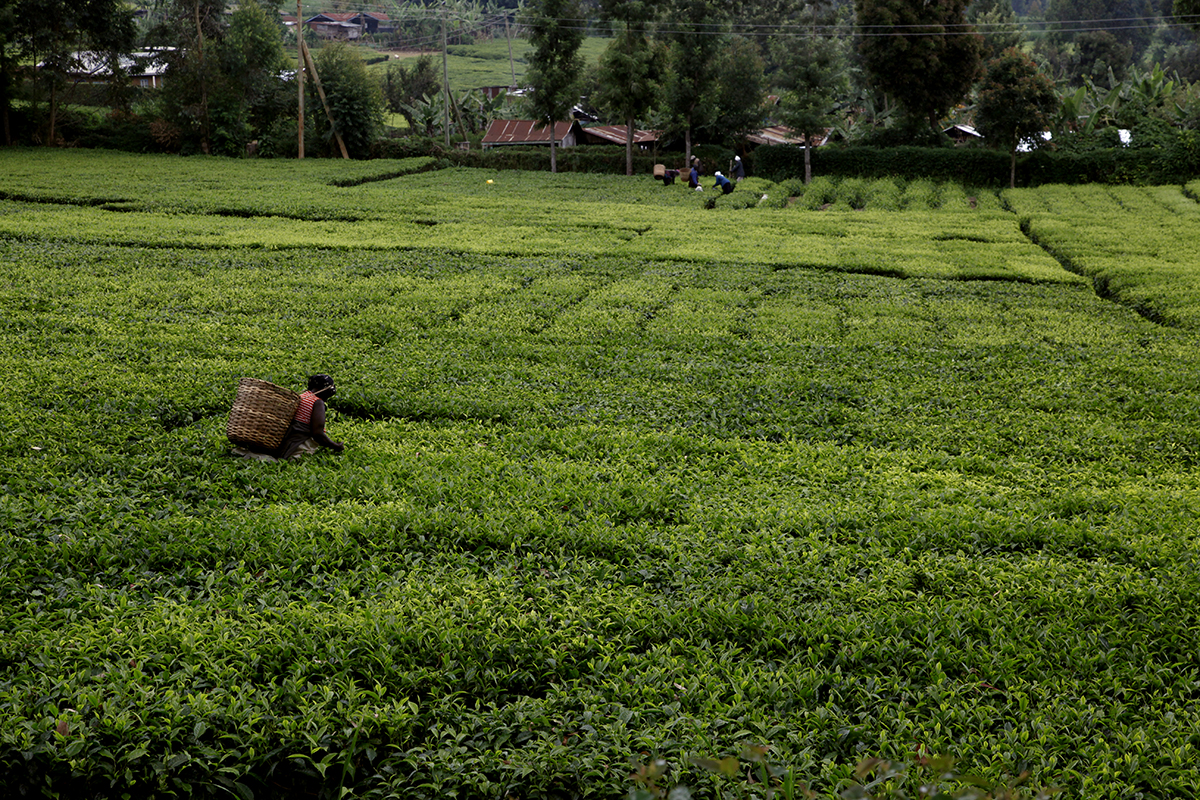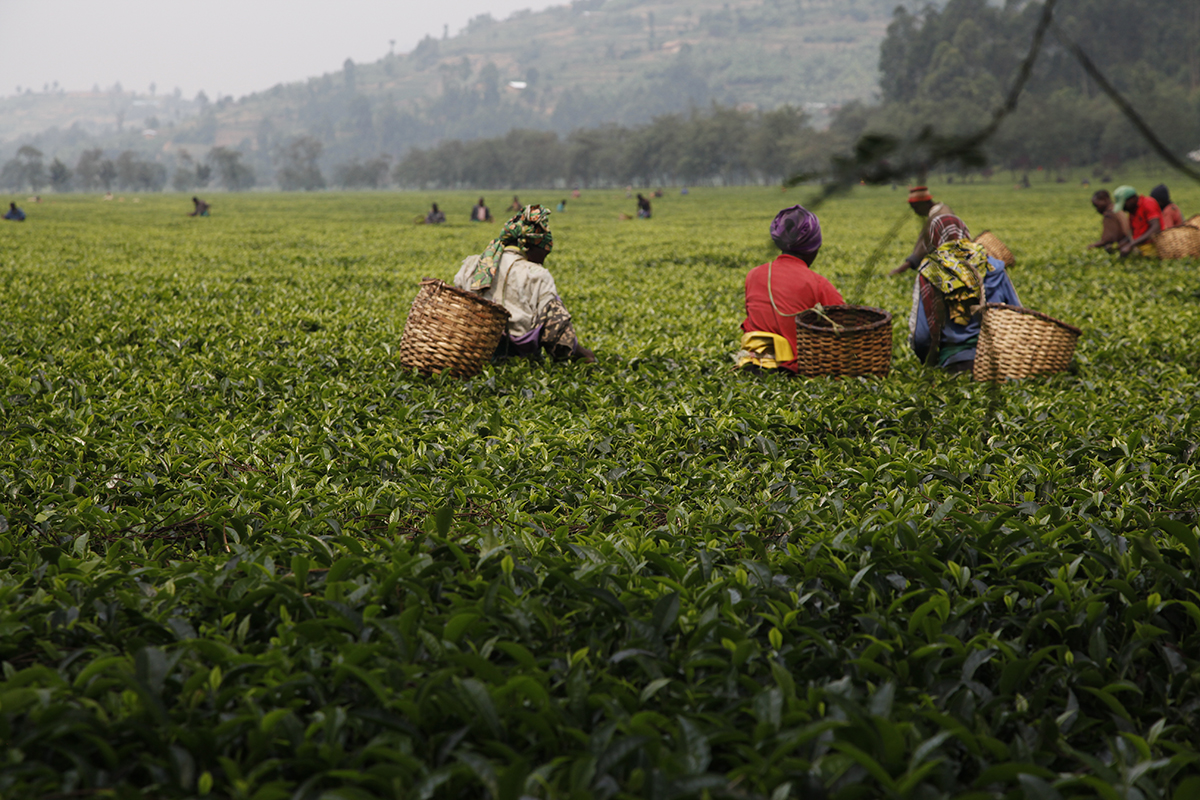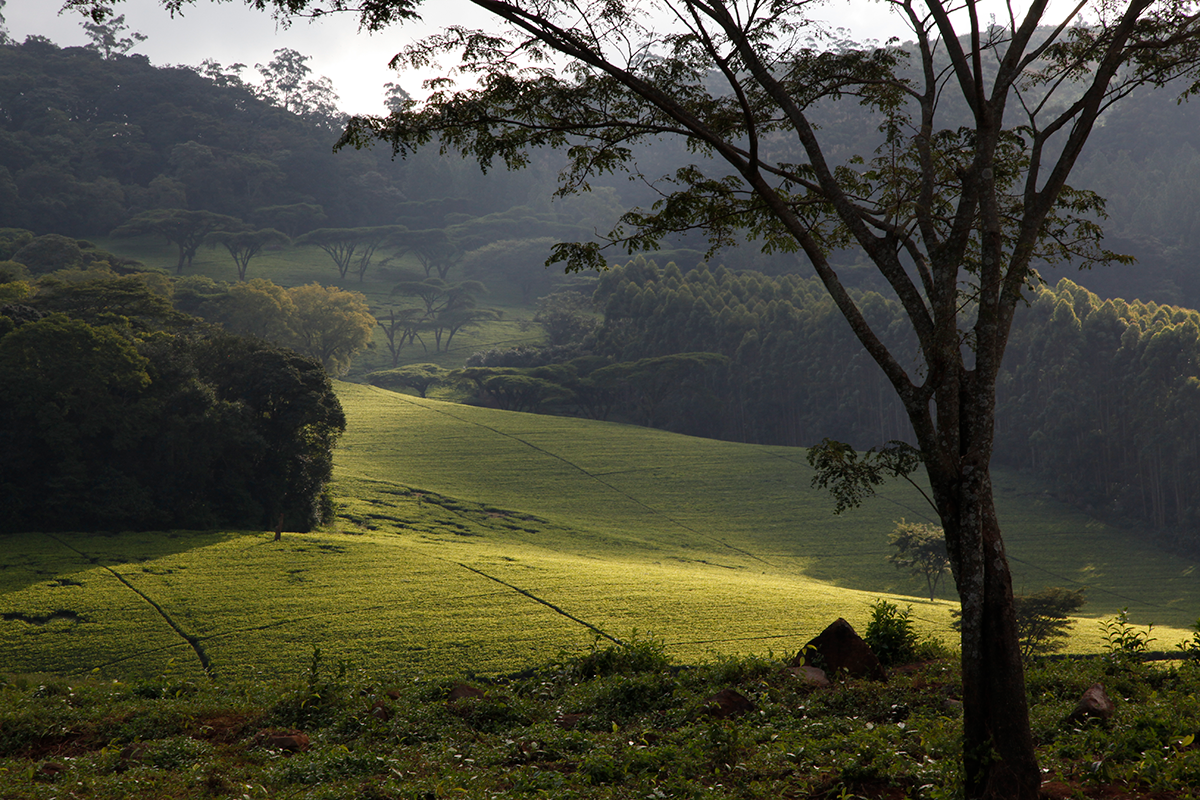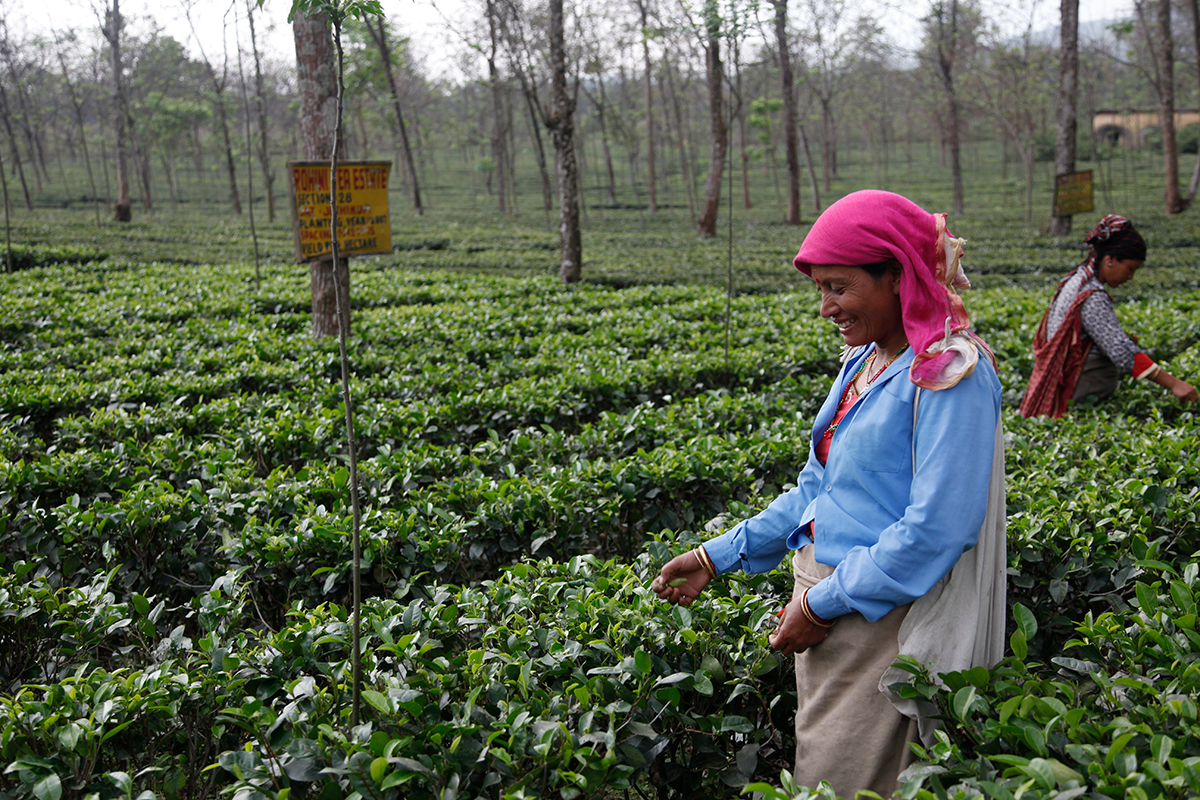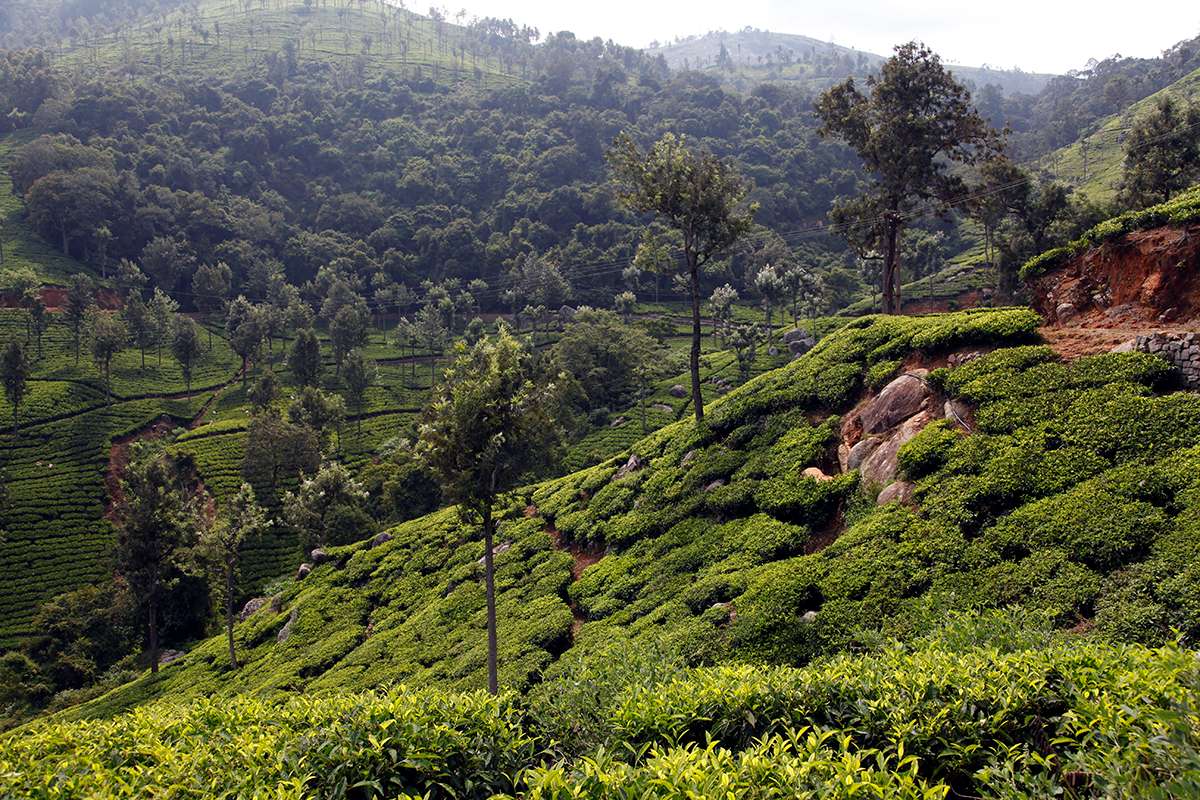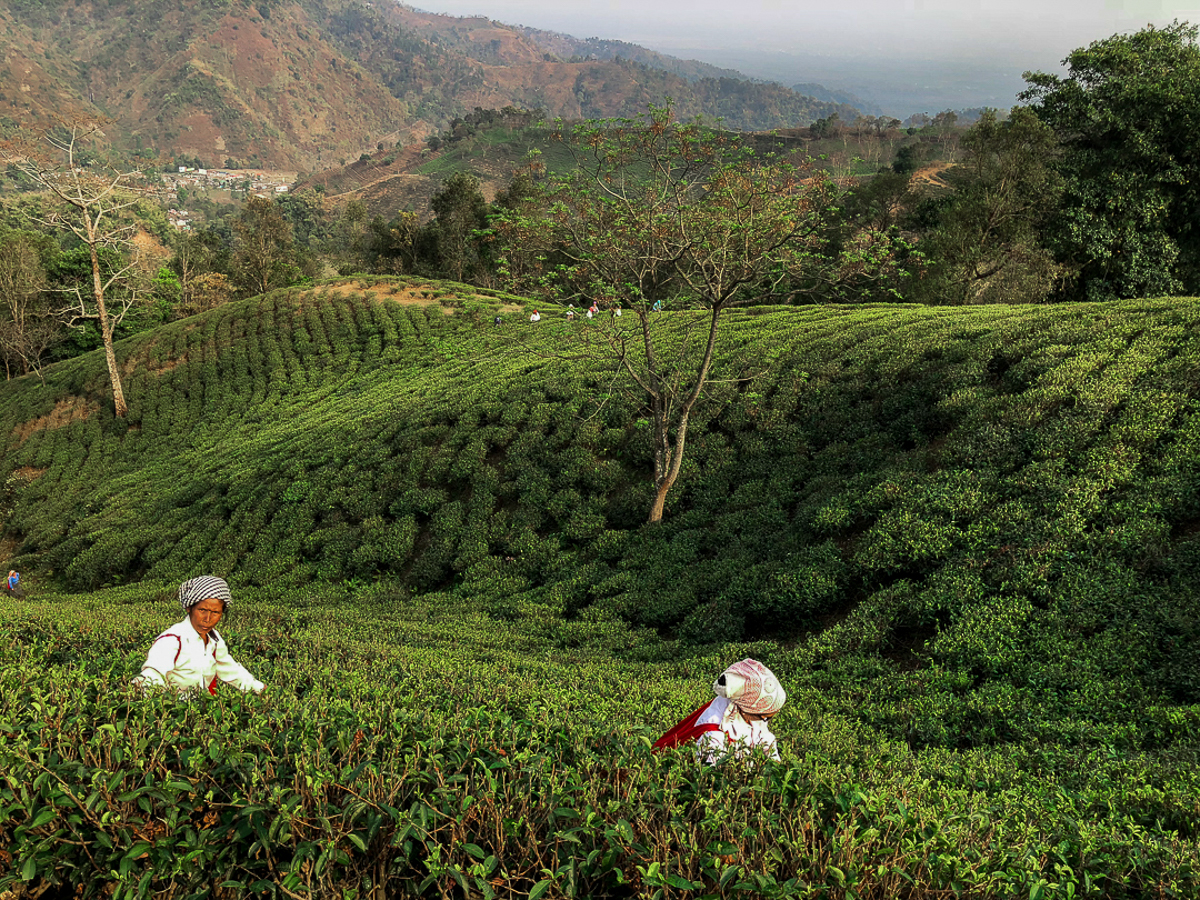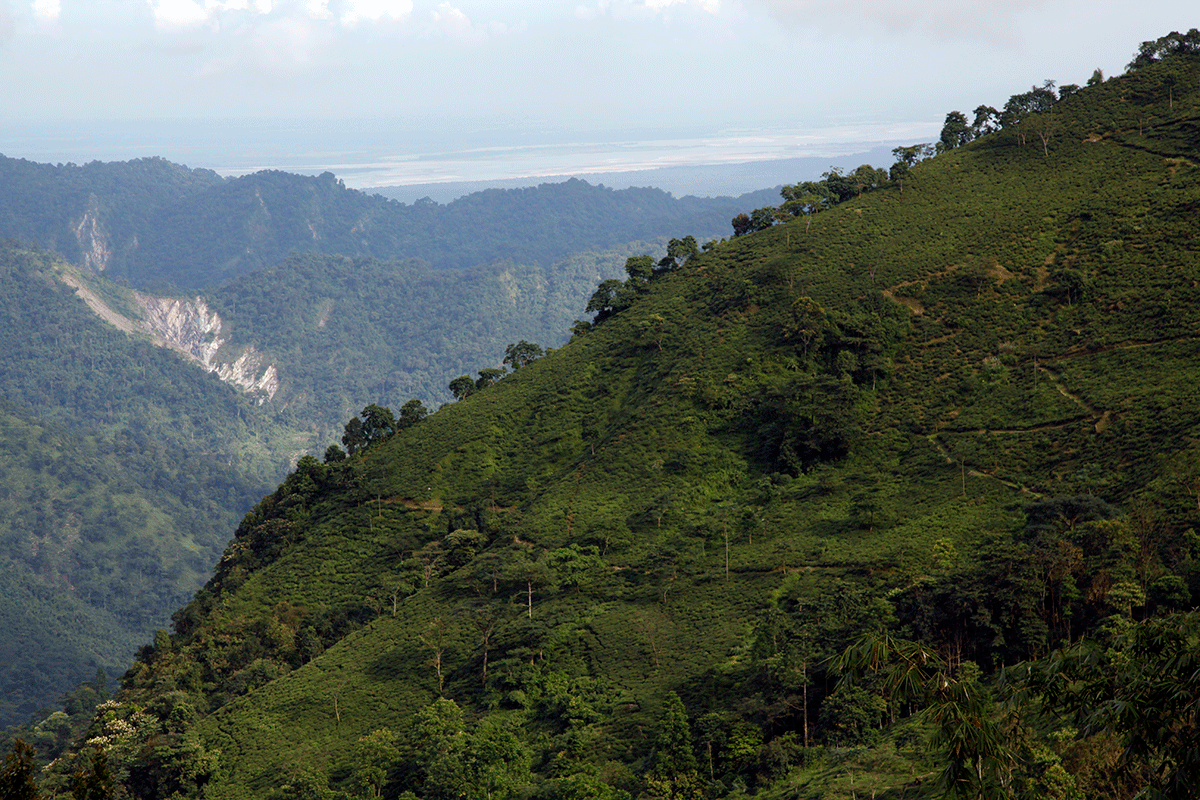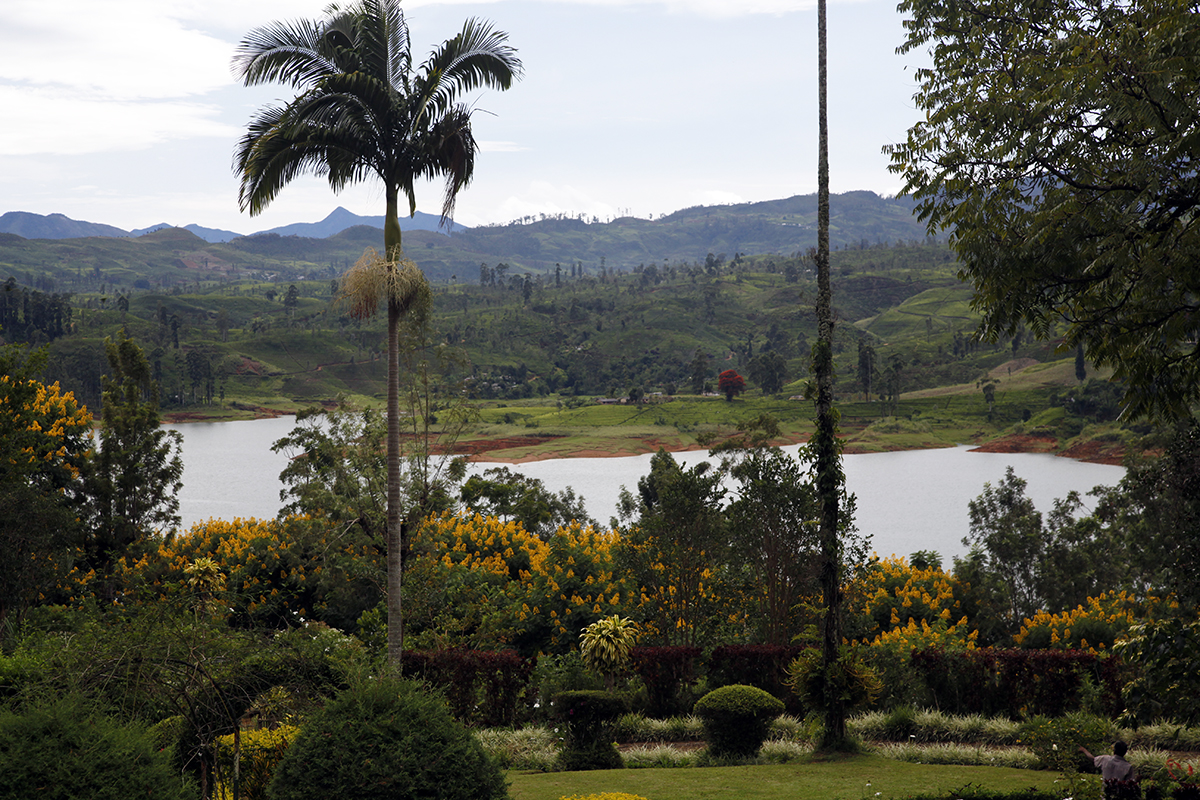In Georgia, tea grows mainly in the provinces of Guria and Imereti, where the prevailing westerly wind blows in moisture-laden clouds from the Black Sea all year round. These are mountainous, jungle-covered regions. The tea bushes weren’t tended for nearly 30 years, so between harvests, ferns and brambles must be uprooted in order to find them. This is a mammoth task for the small producers and their teams who, in the space of a fortnight, see their Camellia sinensis disappearing under the dense vegetation.
Plantation
Roll out the green carpet
It takes a lot of attention to detail to produce fine tea, harvested from this beautiful emerald expanse. Only the bud and the first two youngest leaves at the tip of the shoot must be picked. The subsequent stages in production also play an important role in quality. Let’s roll out the green carpet for everyone who helps to create such delicious teas.
Alex cultivates curiosity
By the time you read this, I’ll be with my friend Alex, tasting each of his teas. His Satemwa plantation in Malawi is one of the best in Africa. Not content with making tea for industrial producers, Alex set up different workshops to enable him to experiment – with success. He’s tried all types of processing methods to make semi-oxidised, green, white, fermented, smoked and sculpted teas. Curiosity doesn’t kill the cat; on the contrary, it helps us progress, and Alex is a brilliant example.
Fortunately
Fortunately, Covid-19 doesn’t stop tea leaves from growing or the harvest from taking place. Samples are reaching us and our taste buds still function, as does our sense of smell. Several of us are able to taste the teas, taking care to protect ourselves. And so, happily, we can get on with our job of choosing the finest teas among the new arrivals. We are still able to drink the most wonderful spring teas, among others, while waiting for better days ahead. And we are able to live in harmony with nature, in harmony with those who are far away and whom we will meet again one day, when the conditions are right to travel again.
Search carefully
Tea was introduced to Malawi at end of the 19th century by Scottish missionaries. It grows in the far south of former Nyasaland, a stone’s throw from Mozambique. Like many African countries, most of Malawi’s tea is grown for the tea bag market. But it is sometimes possible to find rarer teas, if you search carefully.
Rohini Early Spring, a premium tea from cultivar B157
In Darjeeling, tea grows at altitudes ranging from 100 to 2,100 metres. The lower-grown teas are harvested first, of course, because of the milder temperatures they enjoy. Remember, tea plants enter dormancy when daytime temperatures remain below 12°C.
I’ve just bought a batch of Rohini Early Spring. It’s a delicious tea, and it’s special too, not so much because of the location of the plantation, but because of the quality of the cultivar, B157 (Bannockburn 157). It’s also unusual in that the plot is entirely planted with this cultivar, whereas many sections on Darjeeling plantations are made up of a patchwork of different tea varieties. The planter – who is well aware that his garden isn’t among the best-known names – is hugely creative when it comes to developing rare teas. He really takes care with the processing part, adjusting every parameter (intensity of withering, rolling, oxidation, drying) until he obtains the exact liquor he wants. This is a wonderfully delicate premium tea with a powerful grassiness and intense freshness. It will be available around 22 March, following the necessary food safety tests.
While we wait for Darjeeling, here’s Kotagiri Frost
The teas of Southern India offer an interesting alternative to those in the north when the latter haven’t been able to grow due to lingering low temperatures. In the Nilgiri mountains, tea is produced in the Darjeeling style, and Kotagiri Frost is the best-known of these at the moment. In the cup, it reveals an intense green freshness that announces the arrival of spring. This premium tea will be available around 15 March, following the necessary food safety tests.
Darjeeling kicks off the season
Every year, Darjeeling kicks off the harvest season. 2021 should be the same, as long as Covid doesn’t force the Himalayan foothills into lockdown. The harvest should start, as usual, around the time of the Holi festival. After a dry winter (the last major rainfall was back in September), the tea plants are struggling. They need rain so that the buds, which are just waiting to grow, can turn into leaves.
Singbulli is changing hands
Tea plantations sometimes change hands, and this is important knowledge for tea researchers. The Singbulli garden (photo) in Darjeeling has just been sold. Who will be the next planter? What knowledge of tea will they have, and what production methods will they use? These questions show that you cannot rely on a garden’s name alone. The life of a tea estate evolves, and with it the quality of the teas it produces. Let’s hope that Singbulli continues to make the delicious teas to which we have become accustomed, such as those fine teas produced using cultivar AV2 and on the best plot: Tingling.
Around Maskeliya Lake
Would you like to come for a walk with me around Maskeliya Lake in Sri Lanka? Here, we’re halfway between the high-grown and low-grown teas; between those from the mountains of the Nuwara Eliya region and the often-remarkable teas produced in the jungle around Sinharaja forest further south. This is the view from the front of the bungalow on the Moray Tea Estate. The artificial Maskeliya Lake is surrounded by tea plants and the magnificent flora particular to this region, including flamboyant cassia and poinsettia. The yellow and red brighten up the eternal green of our camellias.

